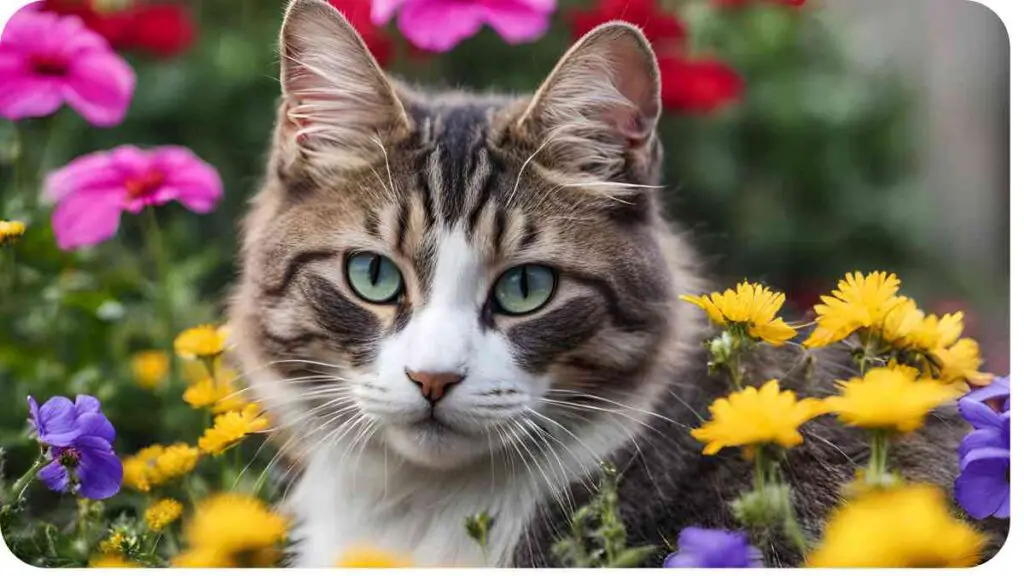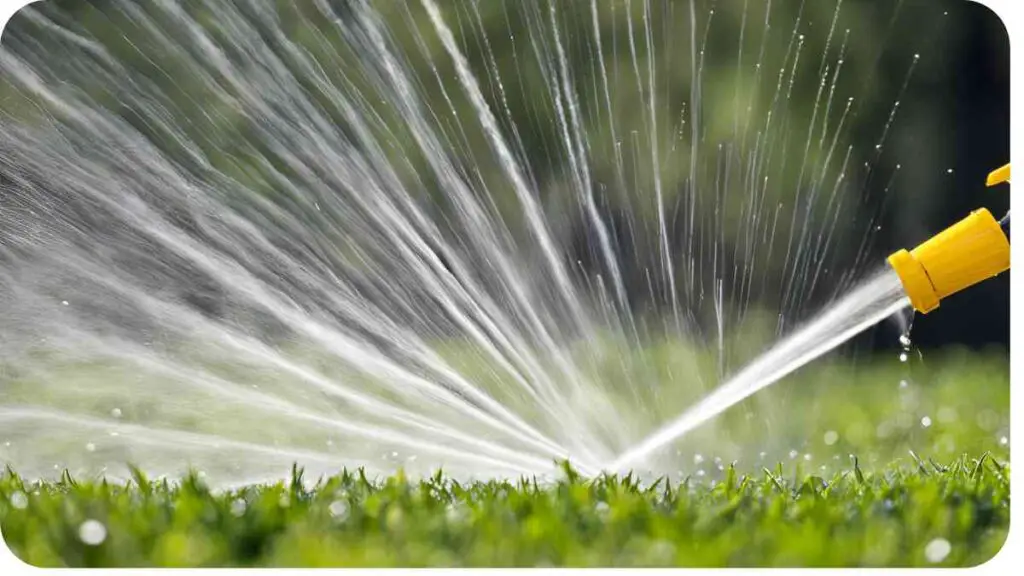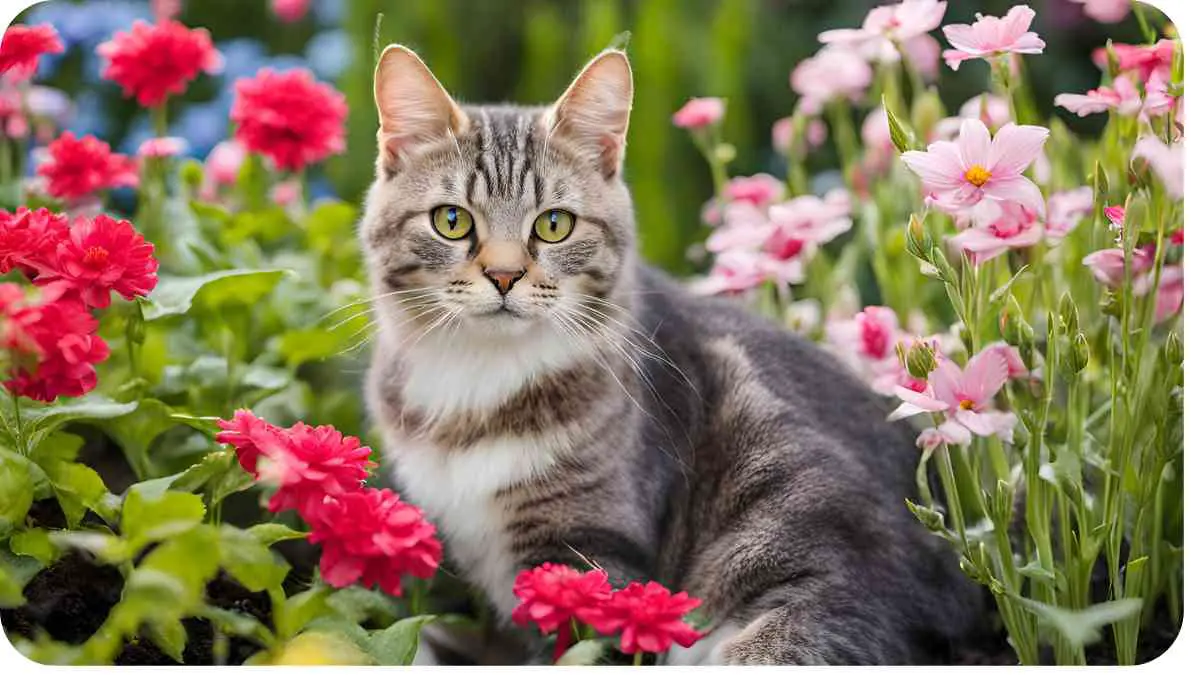Cats are wonderful companions, but their tendency to use flower beds as their personal litter boxes can be frustrating for gardeners. In this guide, we’ll explore effective strategies to keep cats out of your flower beds without harming them.
| Takeaways |
|---|
| Understand why cats are drawn to flower beds to effectively address the issue. |
| Utilize natural deterrents like citrus peels and coffee grounds. |
| Consider physical barriers such as chicken wire or decorative fencing. |
| Use scent repellents like vinegar or cayenne pepper to discourage cats. |
| Install motion-activated devices or water sprinklers for automated deterrence. |
| Create distractions like sandboxes or cat-friendly plants in your garden. |
| Regular maintenance and positive reinforcement are key to long-term success. |
2. Understanding the Problem
Before diving into solutions, it’s crucial to understand why cats are drawn to flower beds in the first place. Cats are naturally curious creatures, and flower beds provide loose soil that’s ideal for digging and covering waste. Additionally, cats may be attracted to certain plants or the presence of other animals, like birds or rodents, that frequent your garden.
Discover effective methods to deter feline intruders and safeguard your blossoming garden. Learn innovative strategies and natural remedies to keep cats out of your flower beds, ensuring your plants remain undisturbed and thriving.
3. Why Cats Choose Flower Beds

Understanding the reasons behind feline behavior can help us devise effective solutions. Cats are territorial animals, and they mark their territory through urine and feces. Flower beds offer soft, easily-digested soil, providing an ideal spot for cats to fulfill this instinctual behavior. Additionally, the scent of certain flowers or mulch may attract cats.
4. Natural Deterrents
Table: Natural Deterrents for Cats
| Deterrent | Effectiveness |
|---|---|
| Citrus peels | High |
| Coffee grounds | Moderate |
| Lavender | Low |
Natural deterrents can be an effective and environmentally-friendly way to keep cats out of your flower beds. Citrus peels, coffee grounds, and lavender are all scents that cats typically find unpleasant. Placing these around the perimeter of your flower beds can discourage them from entering.
Combat squirrel nuisances effectively with practical techniques tailored to your garden’s needs. Explore humane and efficient solutions to rid your flower garden of these furry pests, preserving the beauty and tranquility of your outdoor space.
5. Physical Barriers
Table: Physical Barriers Comparison
| Barrier | Pros | Cons |
|---|---|---|
| Chicken wire | Inexpensive, easy to install | Not visually appealing |
| Spiky deterrents | Effective deterrent | May harm cats or other wildlife |
| Decorative fencing | Adds aesthetic value to garden | More expensive than other options |
Physical barriers provide a more permanent solution to keeping cats out of your flower beds. Chicken wire can be laid on the ground or buried slightly to prevent digging, while spiky deterrents like plastic mats or thorny branches create an uncomfortable surface for cats to walk on. Decorative fencing not only serves as a barrier but also enhances the visual appeal of your garden.
When choosing a physical barrier, consider both effectiveness and aesthetics to ensure it complements your garden’s design.
6. Scent Repellents
Table: Scent Repellents Effectiveness
| Repellent | Effectiveness |
|---|---|
| Vinegar | High |
| Cayenne pepper | Moderate |
| Ammonia | Low |
Scent repellents work by creating an unpleasant odor that cats want to avoid. Vinegar, cayenne pepper, and ammonia are commonly used repellents that can be sprayed or sprinkled around flower beds. However, it’s essential to use these repellents sparingly and avoid direct contact with plants, as they may cause damage.
Spring brings renewal and tasks to revitalize your flower beds. Learn essential tips and techniques on preparing your flower beds for the season, ensuring a vibrant and flourishing garden landscape as nature awakens from its winter slumber.
7. Water Sprinklers

Table: Water Sprinklers Comparison
| Sprinkler | Pros | Cons |
|---|---|---|
| Motion-activated | Effective deterrent | Requires regular maintenance |
| Timer-controlled | Set-and-forget solution | May deter beneficial wildlife |
Water sprinklers equipped with motion sensors or timers can startle cats and deter them from entering your flower beds. Motion-activated sprinklers are triggered by movement, while timer-controlled sprinklers provide a consistent deterrent without relying on motion detection.
Protect your flower beds from rodent invaders with effective pest management strategies. Explore practical tips and techniques to eliminate rats from your garden, safeguarding your plants and creating a tranquil outdoor sanctuary free from unwelcome guests.
8. Motion-Activated Devices
Table: Motion-Activated Devices Comparison
| Device | Pros | Cons |
|---|---|---|
| Ultrasonic repellents | Humane deterrent | May not be effective on all cats |
| Motion-activated alarms | Loud deterrent | May startle neighbors or pets |
Motion-activated devices use sound or vibrations to deter cats from entering your flower beds. Ultrasonic repellents emit high-frequency sounds that are unpleasant to cats but are generally inaudible to humans. Motion-activated alarms produce loud noises or vibrations when triggered by movement, startling cats and encouraging them to leave.
9. Creating Distractions
Creating distractions in your garden can divert cats’ attention away from your flower beds. Providing designated areas for digging, such as a sandbox filled with loose soil or mulch, can satisfy their natural instincts without damaging your plants.
Additionally, incorporating cat-friendly plants like catnip or cat grass can attract cats to other areas of your garden.
Regularly refreshing these distractions and monitoring their use can help prevent cats from returning to your flower beds.
10. Regular Maintenance
Regular maintenance of your garden can help deter cats from using your flower beds as litter boxes. Removing any waste promptly and covering bare soil with mulch or ground cover plants can make your garden less inviting to cats. Additionally, pruning dense foliage and removing debris can eliminate hiding spots for cats and other animals.
Consistent upkeep of your garden not only enhances its appearance but also reduces the likelihood of attracting unwanted visitors.
After the winter chill fades, it’s time to rejuvenate your flower beds. Dive into a comprehensive guide on cleaning and revitalizing your outdoor space, ensuring a fresh start for your plants and a stunning display of blooms.
11. Positive Reinforcement
Positive reinforcement techniques can encourage cats to avoid your flower beds. Providing treats or praise when cats use designated areas for digging reinforces desirable behavior. You can also use deterrents in conjunction with positive reinforcement, such as placing treats near the perimeter of your flower beds to create a negative association with that area.
12. Conclusion
Keeping cats out of your flower beds requires a combination of understanding their behavior and implementing effective deterrents. By utilizing natural, physical, and sensory barriers, as well as creating distractions and maintaining your garden, you can create an environment that is less inviting to cats while still maintaining its beauty.
Remember to consider the needs of both your garden and the cats themselves when choosing deterrents. Humane solutions that do not harm cats or other wildlife are not only more ethical but also more sustainable in the long run.
With patience, consistency, and a bit of creativity, you can enjoy a flourishing garden without the hassle of unwanted feline visitors. By implementing these strategies, you can create a peaceful coexistence between your plants and your furry friends.

For 15 years, Hellen James has worked in the gardening industry as an expert and landscape designer. During her career, she has worked for a variety of businesses that specialize in landscaping and gardening from small firms to large corporations.

